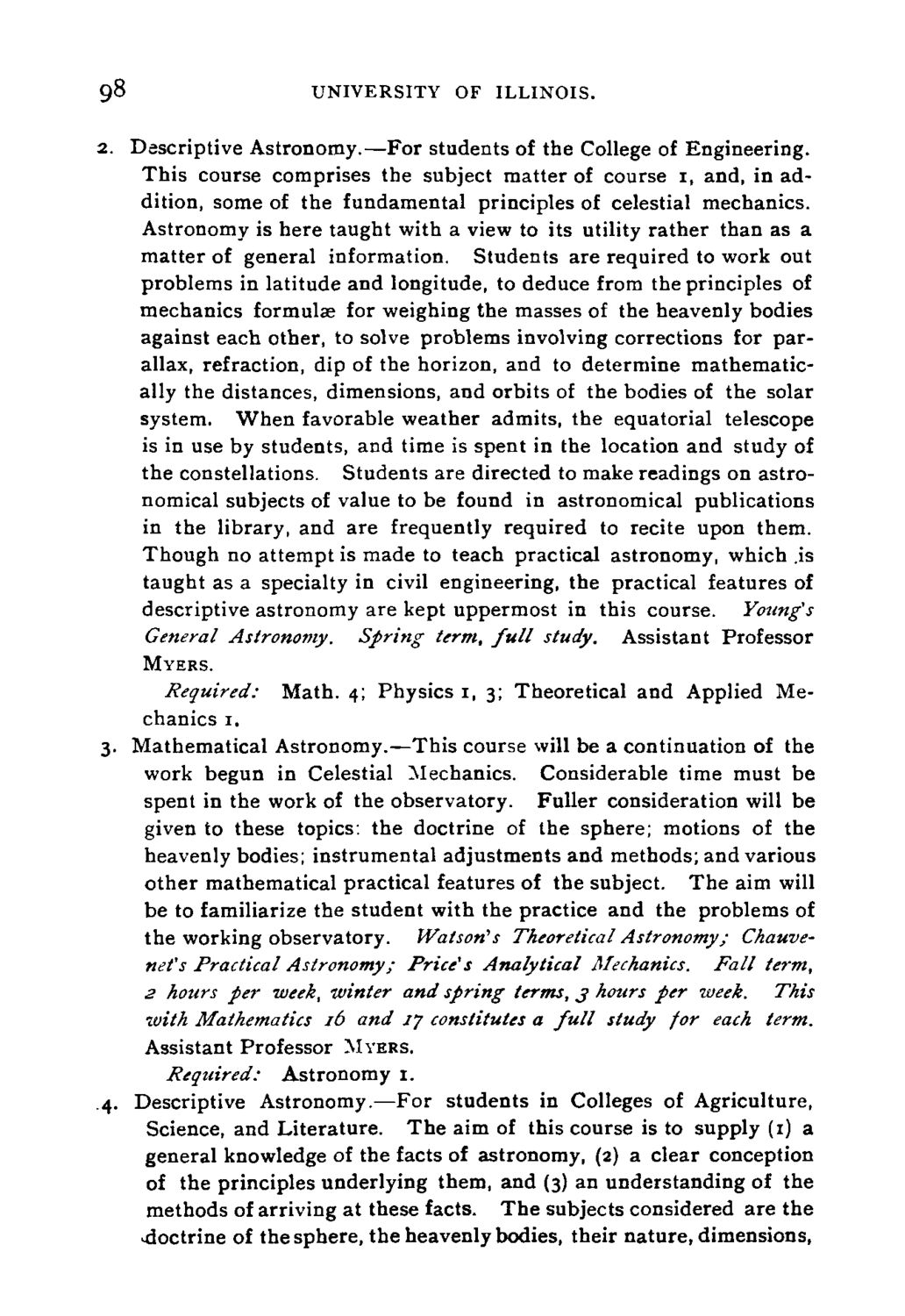| |
| |
Caption: Course Catalog - 1893-1894
This is a reduced-resolution page image for fast online browsing.

EXTRACTED TEXT FROM PAGE:
98 UNIVERSITY OF ILLINOIS. 2. Descriptive Astronomy.—For students of the College of Engineering. This course comprises the subject matter of course i, and, in addition, some of the fundamental principles of celestial mechanics. Astronomy is here taught with a view to its utility rather than as a matter of general information. Students are required to work out problems in latitude and longitude, to deduce from the principles of mechanics formulae for weighing the masses of the heavenly bodies against each other, to solve problems involving corrections for parallax, refraction, dip of the horizon, and to determine mathematically the distances, dimensions, and orbits of the bodies of the solar system. When favorable weather admits, the equatorial telescope is in use by students, and time is spent in the location and study of the constellations. Students are directed to make readings on astronomical subjects of value to be found in astronomical publications in the library, and are frequently required to recite upon them. Though no attempt is made to teach practical astronomy, which .is taught as a specialty in civil engineering, the practical features of descriptive astronomy are kept uppermost in this course. Young's General Astronomy. Spring term, full study. Assistant Professor MYERS. Required: Math. 4; Physics 1,3; Theoretical and Applied Mechanics 1. 3. Mathematical Astronomy.—This course will be a continuation of the work begun in Celestial Mechanics. Considerable time must be spent in the work of the observatory. Fuller consideration will be given to these topics, the doctrine of the sphere; motions of the heavenly bodies; instrumental adjustments and methods; and various other mathematical practical features of the subject. The aim will be to familiarize the student with the practice and the problems of the working observatory. Watsoh''s Theoretical Astronomy; Chauvenet's Practical Astronomy; Price's Analytical Mechanics. Fall term, 2 hours per week, winter and spring terms, j hours per week. This with Mathematics 16 and 17 constitutes a full study for each term. Assistant Professor MYERS. Required: Astronomy 1. .4. Descriptive Astronomy.—For students in Colleges of Agriculture, Science, and Literature. The aim of this course is to supply (1) a general knowledge of the facts of astronomy, (2) a clear conception of the principles underlying them, and (3) an understanding of the methods of arriving at these facts. The subjects considered are the •doctrine of the sphere, the heavenly bodies, their nature, dimensions,
| |